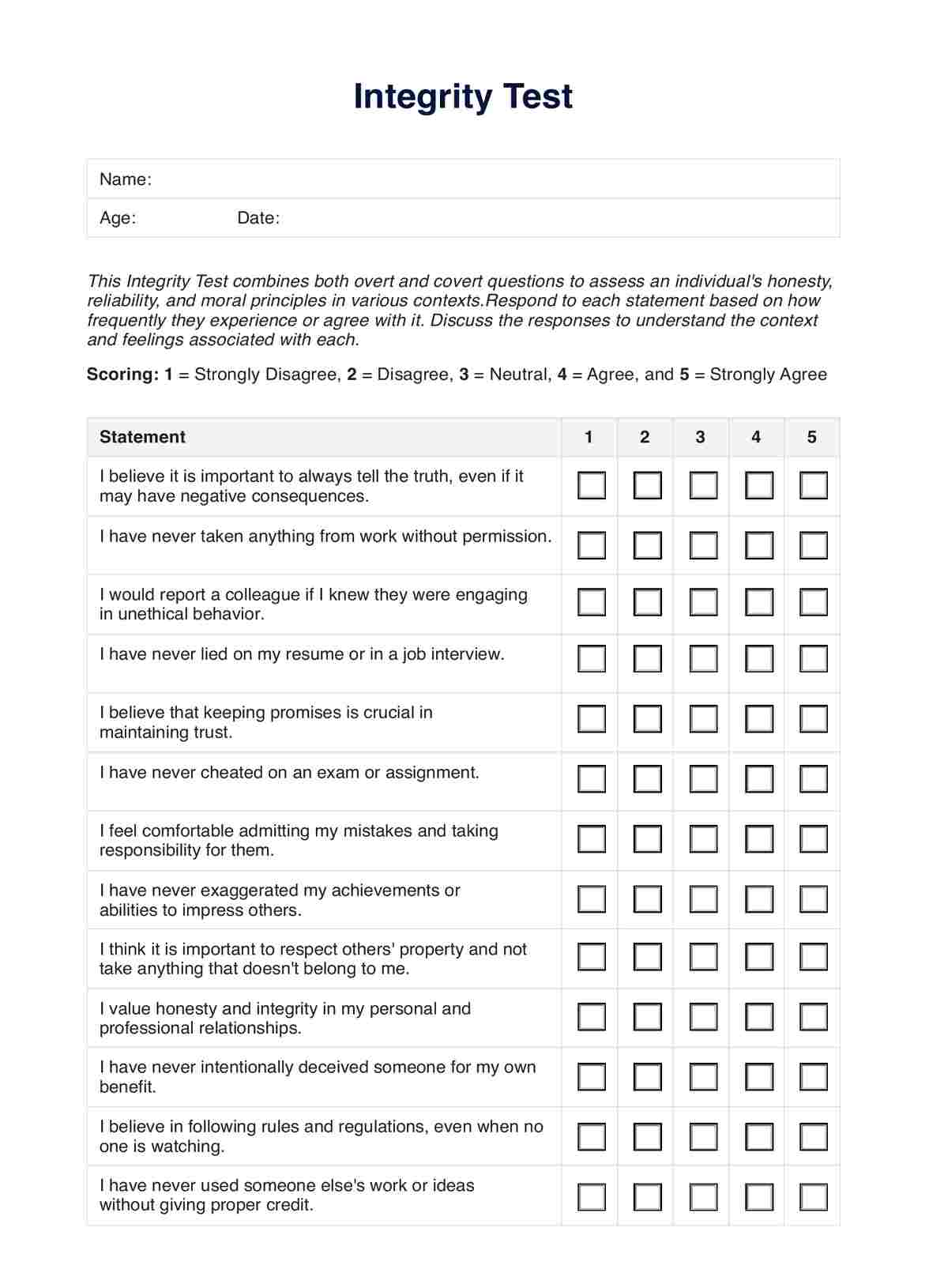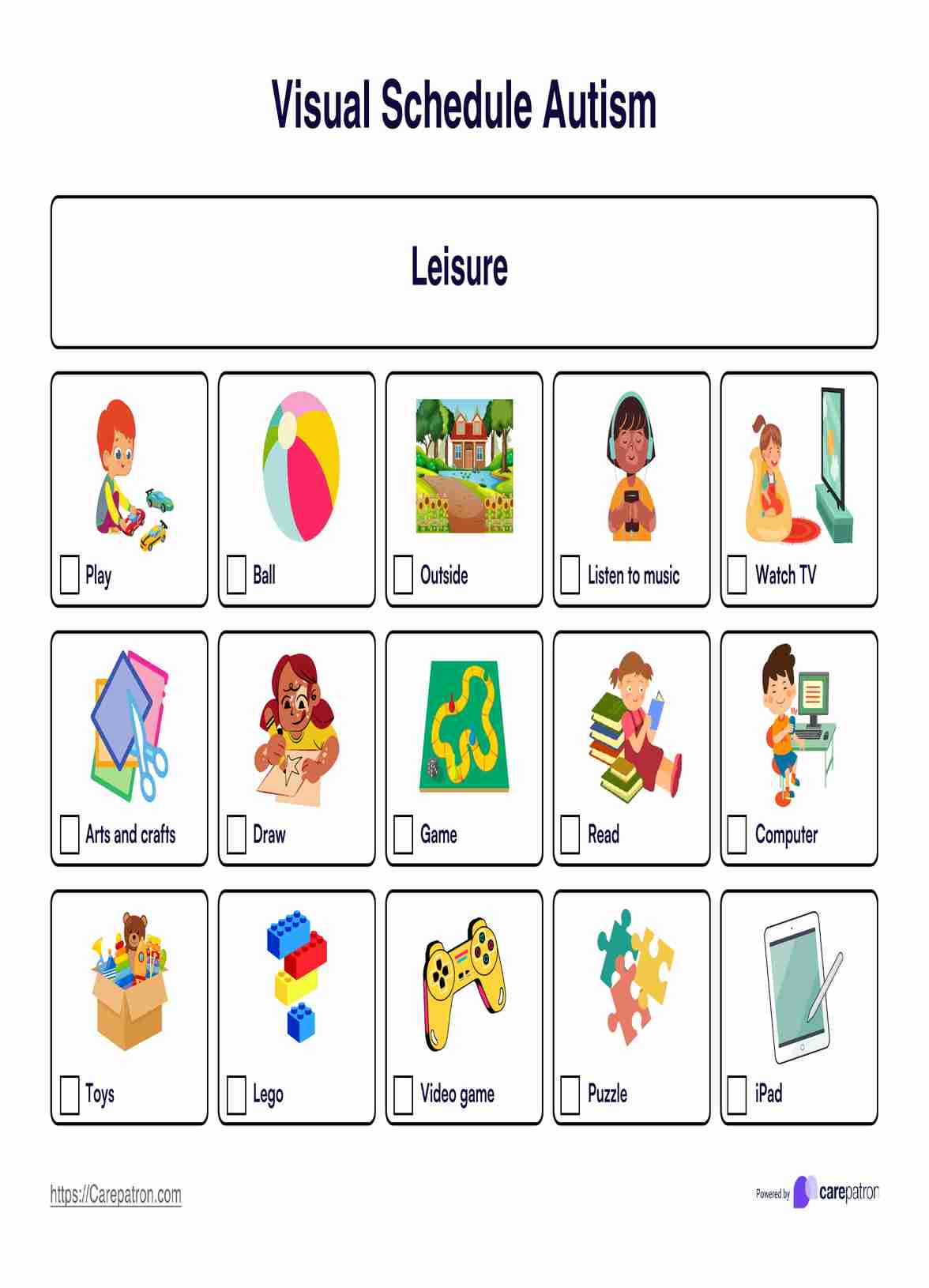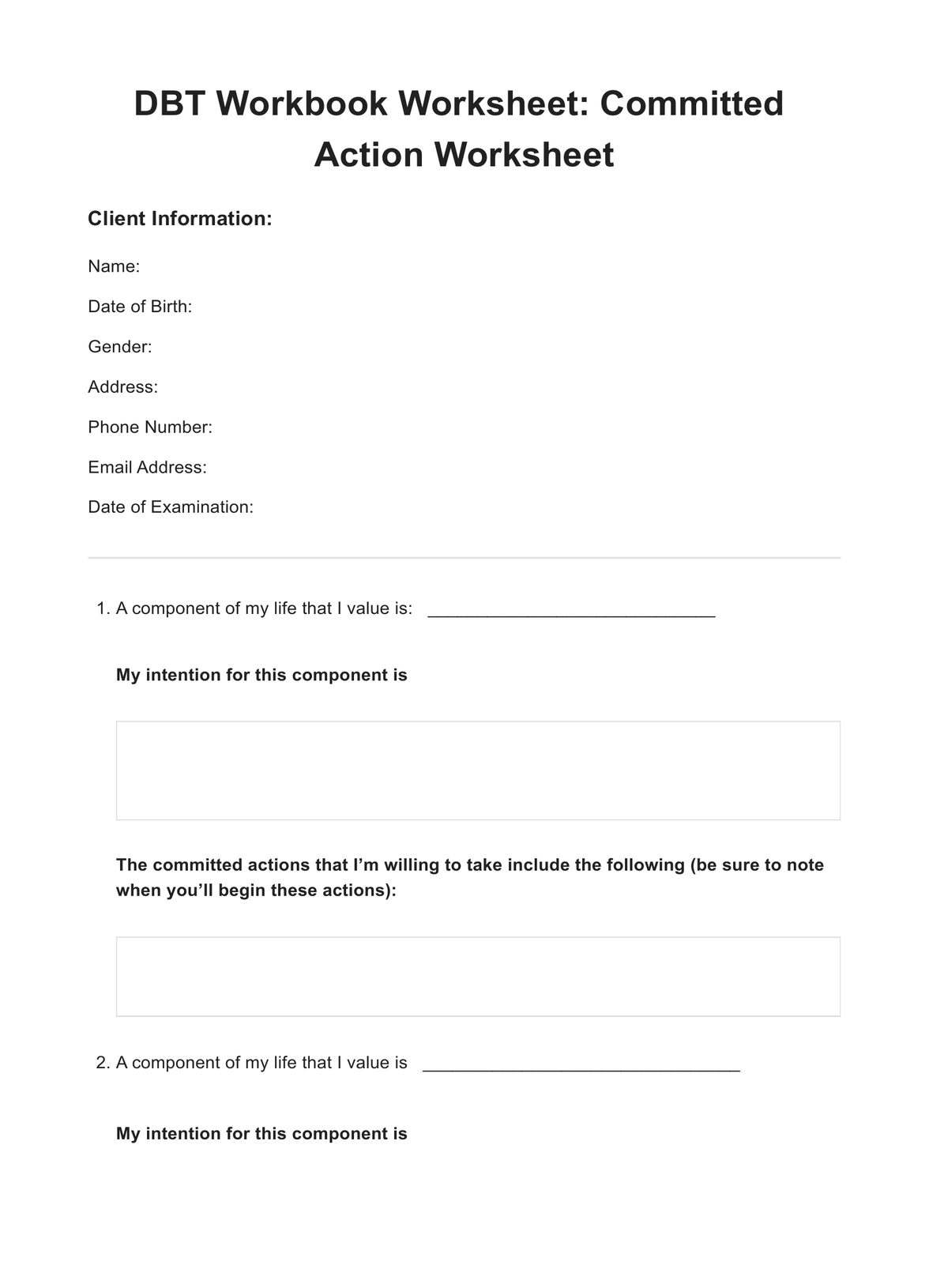Mood and Affect List
Access our practical Mood and Affect List to support accurate and consistent evaluation of a client’s emotional state using clear terminology.


What is a Mood and Affect List?
The Mood and Affect List is a reference tool designed to promote consistency and accuracy in terminology used in mental health evaluations and the mental status examination (MSE). By providing clear definitions and examples, it supports mental health professionals in systematically describing and documenting a patient’s emotional state.
Mood refers to the patient’s sustained internal emotional tone, which may be self-reported or inferred by the clinician. Evaluators consider aspects such as the intensity of the mood, how long it persists, and the degree of fluctuation. For example, a patient might describe their mood as anxious, sad, euphoric, or guilty. Clinicians aim to use precise mood words and avoid vague descriptions like "upset" to ensure clarity in documentation and alignment with clinical methods.
Affect describes the observable expression of emotion, evaluated through facial expressions, tone of voice, and body language. It encompasses aspects such as the alignment of affect with mood, the intensity of expression, the range and variability of emotions, and responsiveness to external stimuli. For instance, a clinician might observe whether the patient’s affect appears appropriate, overly dramatic, flat, or restricted. Observing additional indicators like psychomotor agitation, slowed movements, or pressured speech may further inform the assessment of affect.
The Mood and Affect List ensures consistency in evaluating these emotional states, serving as a guide to improving communication, precision in mental health documentation, and the overall quality of the mental status examination, particularly when diagnosing mood disorders or other mental illnesses.
Mood and Affect List Template
Mood and Affect List Example
How to use our Mood and Affect List template?
Follow these steps to seamlessly integrate the Mood and Affect List into your practice:
Step 1: Access the template
You can access the Mood and Affect List template directly through this guide. Click “Use template” to open the list in the Carepatron app and customize it as needed for your evaluations, or download a printable PDF version.
Step 2: Introduce the list during evaluations
Where necessary, you can use the list to explain to your client how mood and affect are assessed in mental health evaluations. Clarify that mood refers to their internal emotional experience, while affect relates to the observable expression of those emotions. This can help contextualize your observations and questions.
Step 3: Evaluate mood systematically
Use the list as a reference to document the patient’s mood. Ensure your documentation includes details like their emotional state's intensity, duration, and variability. The list provides standardized terminology, such as "euthymic," "irritable," or "depressed," to maintain clarity and precision.
Step 4: Keep it on hand for reference
Keep the Mood and Affect List accessible during sessions as a quick reference to ensure accurate and consistent use of terminology in your assessments.
By following these steps, the Mood and Affect List can help streamline your evaluations and support consistent, accurate documentation in your mental health practice.
How are mood and affect evaluated?
Assessing a patient’s mood and affect is critical to the mental status examination (MSE), a foundational tool in mental health evaluations. This process provides insights into the patient’s mental state and emotional well-being, helping to identify potential mood disorders, mental disorders, or other aspects of mental illness, such as bipolar disorder or a manic episode.
Evaluating mood
Mood refers to the patient’s sustained emotional tone and is typically assessed through a combination of self-report, observation, and standardized tools:
- Self-report: Mental health professionals ask patients about their subjective emotional experiences. Questions such as "How have you been feeling overall in the past week?" or "Can you describe your general emotional state?" help clarify the patient’s subjective experience and identify symptoms like mood swings, elevated mood, or persistent sadness.
- Behavioral observation: Changes in activity levels, appetite, sleep patterns, or social interaction may suggest shifts in mood.
- Standardized rating scales: Tools such as the Beck Depression Inventory (BDI) or the Center for Epidemiologic Studies Depression Scale (CES-D) provide quantitative measures of mood states, assisting in identifying mood disorders or tracking responses to treatment.
Evaluating affect
Affect refers to the observable emotional expression and is assessed by examining how the patient’s outward behavior aligns with their reported mood:
- Non-verbal cues: Mental health professionals observe facial expressions, eye contact, body language, and vocal tone. For example, flat affect or blunted affect may suggest negative symptoms of certain mental illnesses, while incongruent affect could indicate perceptual disturbances or thought processes that deviate from reality.
- Speech patterns: The patient’s spontaneous speech is assessed for halting speech, racing thoughts, thought blocking, or word salad, which may reflect thought processes related to anxiety, depression, or psychosis.
What are the benefits of using this list?
Using a comprehensive Mood and Affect List offers several benefits for healthcare practitioners in the field of mental health assessment and care:
Comprehensive patient assessment
By clearly defining mood and affect, the list enhances a clinician’s ability to accurately evaluate a patient’s mental health status. It offers a standardized approach to understanding key indicators of emotional well-being, such as mood swings, affective incongruence, or symptoms of mood disorders like depression or bipolar disorder.
Improved clinical decision-making
The Mood and Affect List provides a structured framework for describing a patient's emotional state, ensuring consistent and thorough documentation of mood and affect. This systematic approach helps clinicians identify patterns, detect changes over time, cross-check with findings in diagnostic tests or laboratory examinations, and make more informed diagnoses and treatment decisions.
Enhanced communication among professionals
The use of standardized terminology promotes clear and consistent communication across interdisciplinary teams. By ensuring that all healthcare providers describe mood and affect in a uniform manner, the list facilitates collaborative, patient-centered care.
Commonly asked questions
A mental status exam is a systematic evaluation of a patient's mental status, including their emotional state, thought processes, cognitive abilities, and behavior. It helps mental health professionals identify symptoms of mental illnesses such as mood disorders, substance abuse, or underlying medical conditions. Observations include factors like word-finding difficulties, remote memory, poor judgment, and auditory hallucinations.
The Mood and Affect List is a reference tool that provides standardized terminology for describing a patient’s emotional state, supporting the mental status examinations (MSE). While mood and affect are only one component of the MSE, this list ensures clarity and consistency in documentation, complementing other assessments such as cognitive evaluation, thought processes, and perceptual disturbances. Using precise terms, mental health professionals can accurately describe a patient’s internal mood and outward affect.
Mood is assessed by asking how the patient feels, including identifying an unreasonable and sustained belief about their emotional state. Affect is observed through non-verbal cues, like facial expressions and tone of voice, to see if it aligns with their mood. Clinicians also evaluate thought processes, such as thought broadcasting, thought insertion, or overvalued ideas, to understand the connection between mood and cognitive functioning.
A cognitive assessment evaluates memory, attention, and problem-solving skills, contributing to the overall understanding of the patient's mental status. It includes tests for recent memory, remote memory, and word-finding difficulty. Identifying impairments in these areas helps diagnose a possible mood disorder or other conditions affecting cognition.


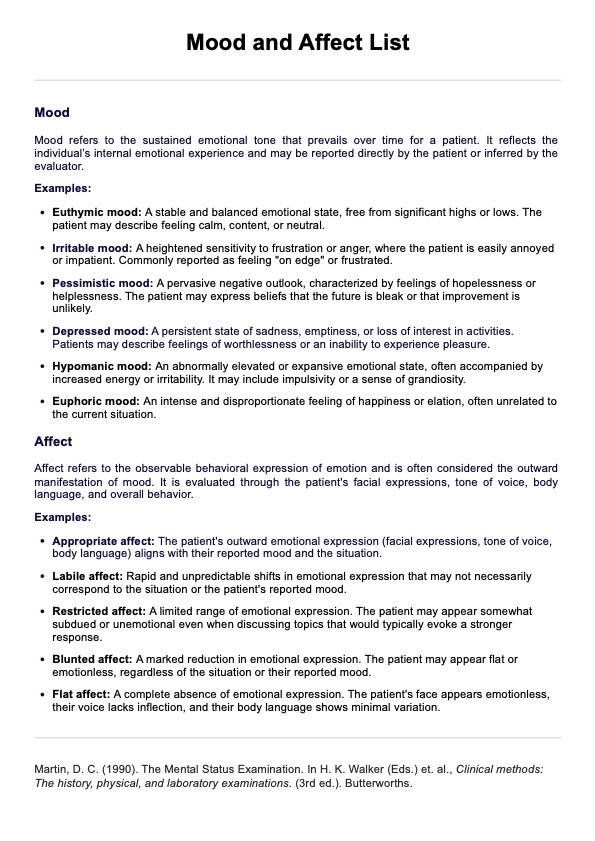


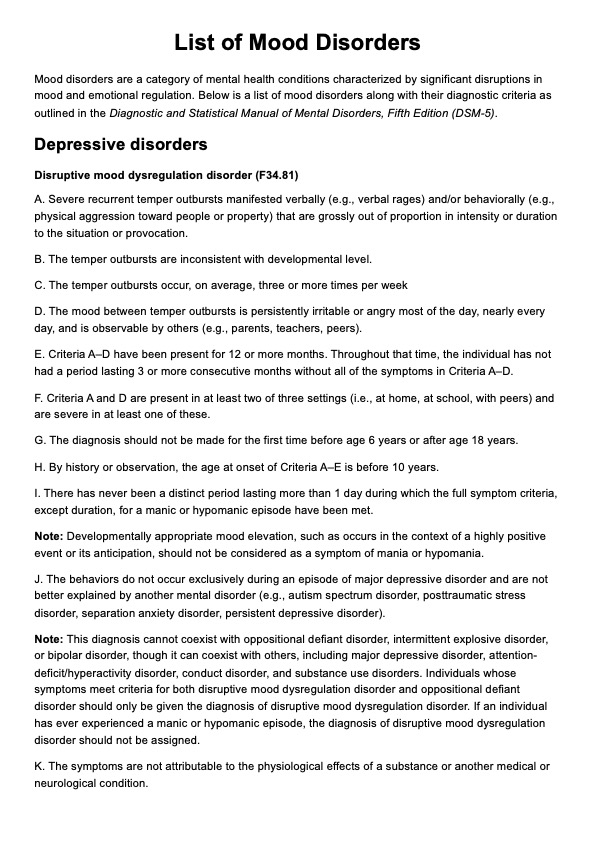
















-template.jpg)


























































































